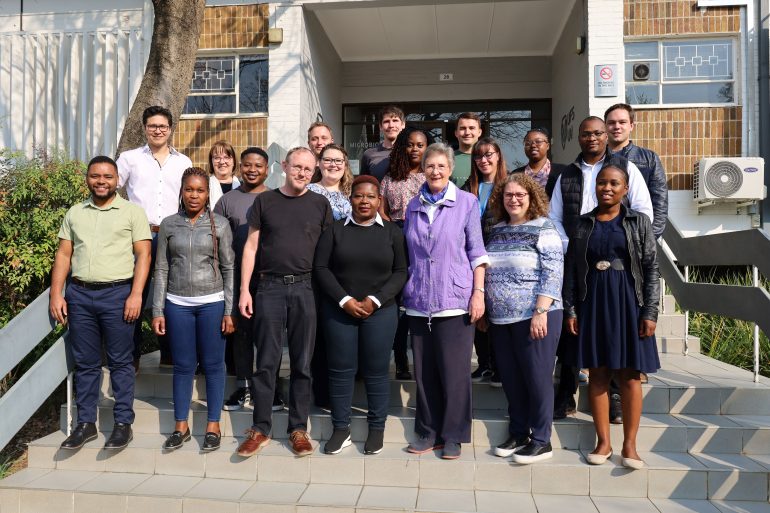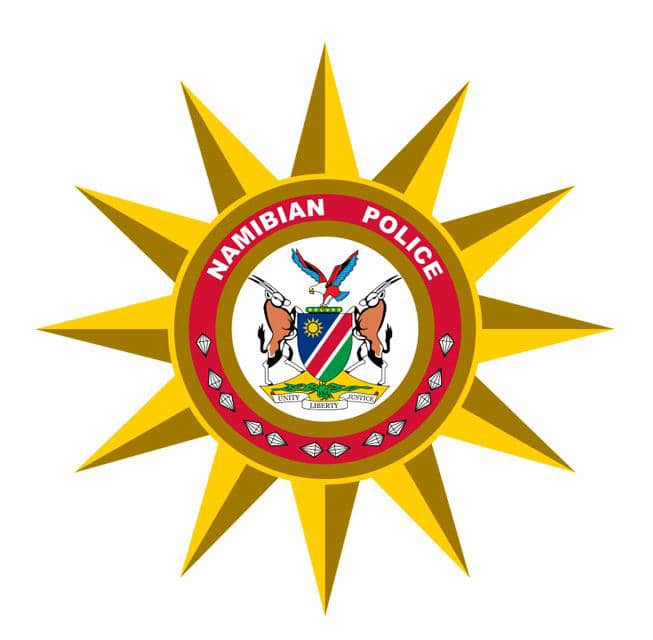Omanyano ovanhu koikundaneki yomalungula kashili paveta, Commisiner Sakaria takunghilile
Veronika Haulenga
Omanyano ovanhu koikundaneki yomalungula kashili paveta, Commisiner Sakaria takunghilile
Veronika Haulenga
Listeners:
Top listeners:
-
play_arrow
Omanyano ovanhu koikundaneki yomalungula kashili paveta, Commisiner Sakaria takunghilile Veronika Haulenga
UFS Molecular Virology group researching rotavirus vaccines for Africa as part of international consortium


Prof Trudi O’Neill (second from the right) and Prof Albie van Dijk (third from the right) from the Department of Microbiology and Biochemistry at the University of the Free State (UFS) hosted a meeting with their colleagues in September as part of the international consortium.
The Molecular Virology group at the University of the Free State (UFS) is part of an international consortium that works towards addressing rotavirus infections on the African continent. The group, under the leadership of Prof Trudi O’Neill, is assisting in this cause by developing a platform for a locally produced vaccine that is more effective against the viral strains on the continent.
The project, which is funded by the German Research Foundation (Deutsche Forschungsgemeinschaft – DFG), consists of researchers from Mozambique, South Africa, and Germany and is already in its second round. The project comes to an end in January 2025, but there is a chance for a two-year extension.
Prof Albie van Dijk was appointed as an Affiliated Professor at the UFS in January 2023 – with her rotavirus research group moving from the North-West University in Potchefstroom to join Prof O’Neill’s laboratory at the UFS. Prof Van Dijk is one of the four principal investigators in the consortium. She has more than 40 years of experience in molecular virology and recombinant vaccine development of dsRNA viruses. Her research focused mostly on bluetongue virus and African horse sickness virus but has shifted over the past 15 years to rotavirus, specifically rationally designed vaccine development. She is a close collaborator of Prof O’Neill.
While the Mozambican researchers who work at the country’s National Institute of Health (Instituto Nacional de Saúde – INS) conduct health surveillance and monitor the vaccines as part of the project, Prof O’Neill and her team are working in collaboration with Mozambique and Prof Van Dijk, as well as a group in Germany, to characterise the viruses and develop new vaccines.
Developing new vaccines
“We are working with the Mozambican group on genome sequencing. We investigate the diversity of the viruses, their composition, and where they originate from. From this we can assume the indications as to why these strains are still prevalent and why they are not being suppressed by the vaccines.”
“Our idea is to investigate local strains as possible vaccine strains, but to do that you need the strains to replicate in cell culture, which is not a simple task. The virus does not adapt easily to cell culture,” says Prof O’Neill.
The purpose of the project is to develop new rotavirus vaccines for the African continent. The consortium uses reverse genetics technology – by using the genome information to develop clones of the virus and by using techniques in cell culture, the virus can be developed from the sequences.
However, there are limits to this, and the researchers are looking at what the limits are in order to find viruses that replicate well. Normally, the classic method of developing vaccines is to use field strains, adapt these strains to cell culture, and through repeated replication in cell culture an attenuated or weakened strain is obtained that can be used as vaccine, explains Prof O’Neill.
Rotaviruses are the most common cause of severe diarrhoeal disease in infants and young children worldwide, according to the World Health Organisation (WHO). In 2004, rotavirus infections were estimated to cause approximately 527 000 (475 000-580 000) deaths, predominantly in developing countries.
Current vaccines
Prof O’Neill, Professor in the Department of Microbiology and Biochemistry, says even though the introduction of vaccines for rotavirus has seen a huge decline in the mortality rate in children worldwide, approximately 80% (some 100 000 annually) of all deaths still occur in sub-Saharan Africa (SSA).
“The vaccines we currently have are based on strains that circulated during the 1970s and 1980s, and all come from Europe or North America. The vaccine strains are therefore not related to the strains we see in Africa.”
“The burden of disease (BOD) is much higher in Africa, but the effectiveness of the vaccines is much lower. Work has been done to look at the different factors, and many factors play a role. With rotaviruses we have seen that the vaccines have a high effectiveness (80%-90%) in Europe, America, Australia, and Japan (all high-income countries), but in South Africa the effectiveness ranges from 50% to 70%. In some African countries it is as low as 30%,” says Prof O’Neill.
South Africa introduced the vaccine in 2009 and the prevalence of the virus has systematically declined. Before the introduction of the vaccine, there was a 40% prevalence in children under five presenting with diarrhoea – almost half of these patients had the rotavirus. Ever since the vaccine was introduced, the prevalence now sits at 15%-20%.
She says vaccine effectiveness is dependent on many factors. Those suffering from malnutrition in poor countries with inadequate sanitation and who live in close contact with animals are most at risk of severe dehydrating diarrhoea caused by rotavirus infections.
Finding a vaccine candidate
The project also creates an opportunity to develop capacity building between the different research groups, as postgraduate students and researchers can participate in exchange programmes. Some researchers from Mozambique and Germany have already spent some time with Prof O’Neill this year.
“The idea of this research is to develop a candidate vaccine with the potential to interest a vaccine producer. We are still in the early stages,” says Prof O’Neill.
According to her, if they could identify a candidate and show that it can induce immune reactions in animals, it might trigger the interest of vaccine producing organisations. “The work we are currently doing is to establish technologies required to analyse immune responses. It is an important step in the development process.”
The focus of Prof Van Dijk’s group is on understanding the genetic and structural requirements involved in the reassortment of the genome segments and proteins between rotavirus strains and on the rational design of novel safety features for the vaccine candidates.
“Reassortment of genome segments between rotaviruses is common, especially those that code for the outer capsid proteins VP4 and VP7, which are the main proteins that generate strain-specific protective immunity. The aim is to generate a universal platform to readily exchange genome segments encoding VP4 and VP7 from current circulating regional rotavirus strains.
“Reverse genetics will be used to generate proof of concept for live vaccine candidates presenting specific combinations of VP4 and VP7. To provide a possible booster vaccine candidate that will not be affected by varying levels of existing immunity in the population, baculovirus expression will be used to produce virus-like particles that present the same VP4s and VP7s,” explains Prof Van Dijk.
To add safety features to the live vaccine candidates, the approach is to cripple specific rotavirus proteins through genetic engineering and reverse genetics so that they are not able to switch off the innate immune response to rotavirus in infected cells anymore.
Written by: Staff Writer
Africa Molecular Virology UFS University of the Free State Vaccines Viral Strains Viruses
Similar posts
Nekundi suggests a NaTis branch in Havana, Katutura, to decongest NaTis Valley Branch
todayApril 4, 2025 36 1
Windhoek Weather
Most popular

Mbumba signs off new benefits for retired political office bearers

Former FNB employee arrested after defraud pensioner off N$215, 000

Namdia Heist: More questions, lots of confusion

Omuhwahwameki Michael okuunganeka oshikonga shoku patitha oostola dho Rani moshilongo ashihe.

Walvis Bay woman loses over N$777.000 to a fraudster
Copyright 2025 Future Media (Pty) Ltd | Website by Digital Platforms
Tel: +264 83 000 1000 | Email: news@futuremedia.com.na





